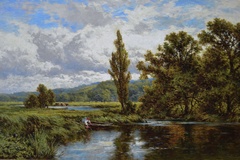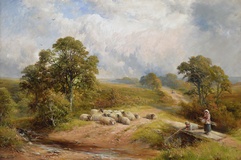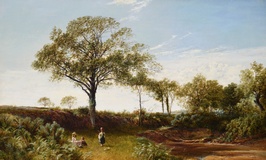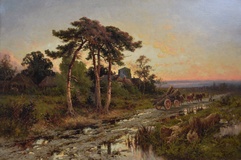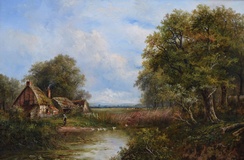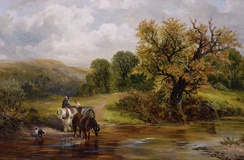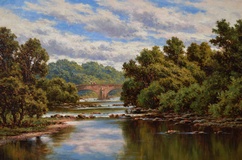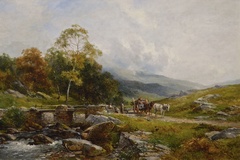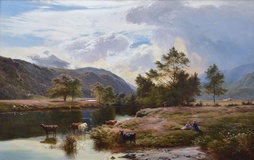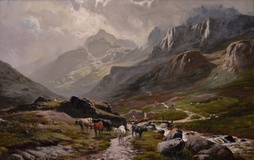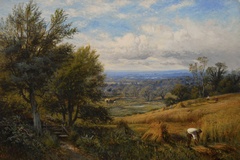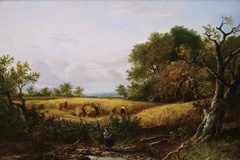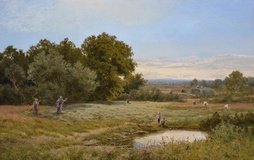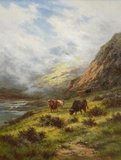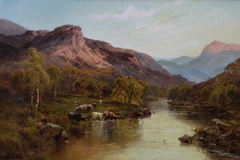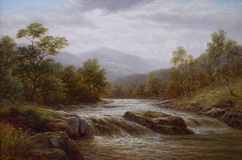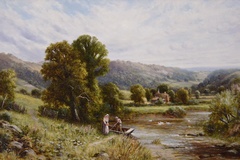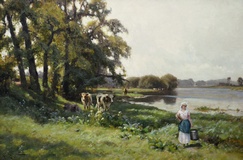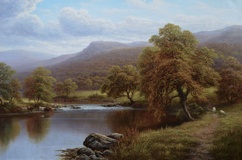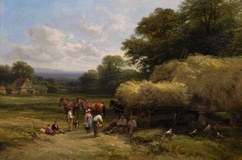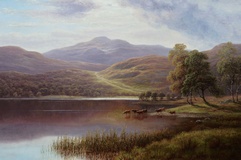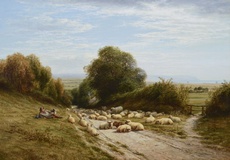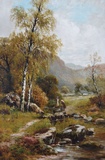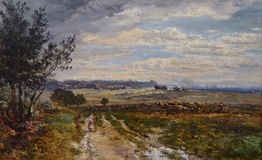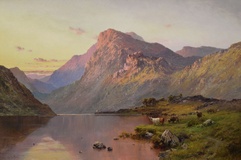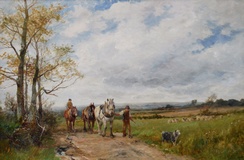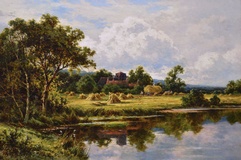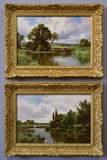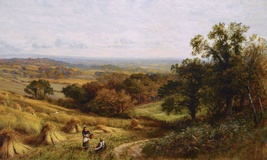Latest Exhibition
The Great British Landscape
Explore the great British landscape with us as we embark on a journey through the rolling hills and serene valleys of the British Isles, during early Victorian age to the Edwardian era. This transformative period not only witnessed a shift in artistic preferences but also opened up new vistas for lesser-known artists, thanks to the accessibility afforded by the advent of the railway. This artistic movement and newfound accessibility not only reflected the changing attitudes towards nature but also left an enduring legacy that continues to resonate today.
In the early Victorian age, industrialisation and urbanisation led to a growing disconnection from nature. The bustling cities and factories created a longing for the unspoiled beauty of the British countryside. This shift in societal sentiment marked the rise of landscape painting, as artists sought to capture the sublime, the picturesque, and the pastoral. Notably, with the advent of the railway, previously remote landscapes became more accessible to artists, fostering a newfound inspiration.
Artists like John Constable and J.M.W. Turner played pivotal roles in shaping the landscape genre during this era. Constable's "The Hay Wain" meticulously portrayed the tranquility of rural life, while Turner's "Rain, Steam, and Speed" captured the essence of a rapidly changing world. As railways expanded their reach, artists found it easier to explore and document the diverse beauty of Britain's topography. The railway made once-remote landscapes accessible to artists of varying backgrounds, providing a platform for lesser-known talents to shine.
As the Victorian era transitioned into the Edwardian era, the fascination with landscape painting persisted. The popularisation of the railway and the motor car revolutionized the art world by making distant landscapes more accessible to a broader range of artists. This newfound accessibility democratized landscape painting, allowing artists from diverse backgrounds to contribute their unique perspectives. As a result, the genre flourished with a rich tapestry of voices, capturing not only the grandeur of nature but also the nuanced details of local scenes.
The enduring appeal of Victorian and Edwardian landscape paintings lies in their ability to transport viewers to a bygone era while offering a timeless connection to nature. The accessibility ushered in by the railway made these landscapes more relatable and attainable, resonating with a broader audience. The meticulous details, atmospheric effects, and emotional resonance captured by artists continue to evoke a sense of wonder and nostalgia. These paintings serve as windows into a serene past, inviting contemplation and introspection.
© Benton Fine Art
